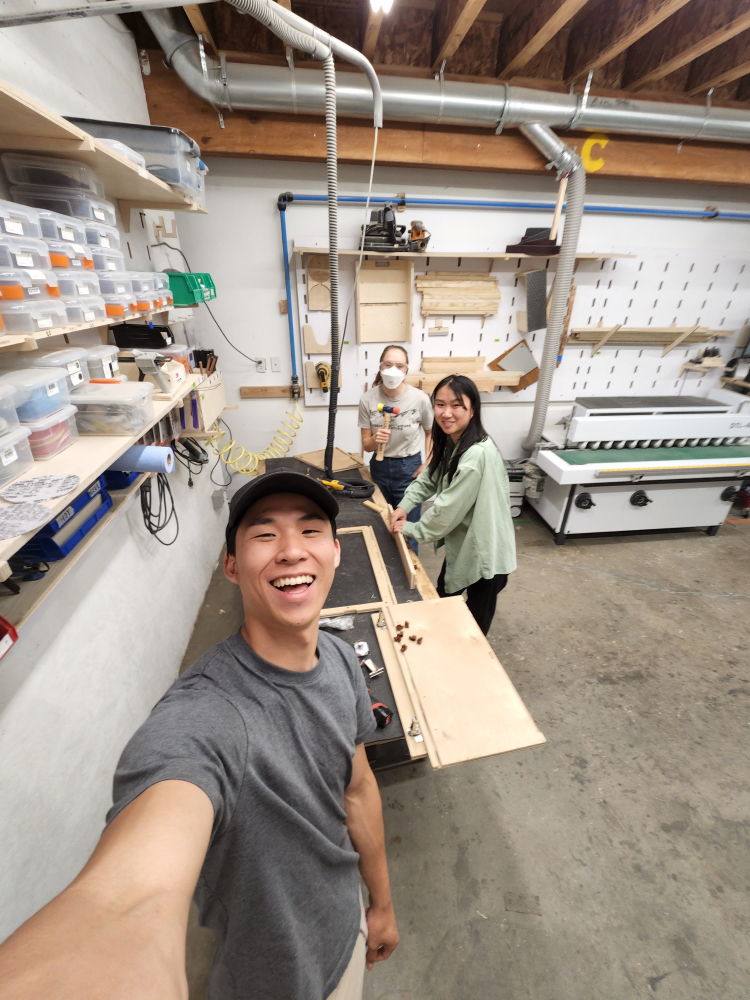Interning with Titan Vans
Nolan Chinn, Helen Do, and Lana Pivarnik are undergraduate students in Mechanical Engineering. They interned with Titan DIY Kits during summer 2022.

Nolan, Helen, and Lana on the job at Titan Vans
Where did you intern and what kinds of projects did you work on?
Nolan: Titan Vans is a camper van conversion company located in Boulder, Colorado that does in-house conversions and sells DIY kits.
Helen: Our biggest project for the summer was the Van-in-a-Box. The ultimate goal is to convert the available models Titan Vans currently builds into a complete DIY set, which would include overhead cabinets, wheel-well cabinets, kitchen galleys, beds, and other various accessories. While designing, we had to keep in mind production costs, affordability to the consumer, ease of installation, quality and longevity of materials and design, and aesthetic appeal.
Lana: Multiple times a summer, Titan Vans attends trade shows and uses kerf walls, which are similar to pegboards, to display information about the company. We created a display of the joinery Titan uses, including dados, rabbets, and half rabbets, on a miniature cabinet.
Was there a challenge you encountered that let you use your engineering skills in a new way?
Nolan: I used a lot of existing CAD knowledge from MCEN 1025, but applied it differently because I was working with wood joinery and sheet metal. With the wood joinery, I had to always think about the strongest way to create the joint while also optimizing my design for the manufacturing process.
Helen: Statics and Solid Mechanics explored different types of forces and how they distribute across a surface. This was important to understand what direction fasteners and loads place. That knowledge helped me analyze whether my designs were viable.
Lana: A side project we worked on was to modify a vacuum attachment to collect more sawdust with each pass. I designed a vacuum head, imported it into a CAD program, and performed flow analysis on it to see if the larger size would impact the sucking capabilities. The project was paused while we worked on the Van-in-a-Box, but it was a good opportunity to use CAD in a new way.
How did what you learned look different than the way you learn engineering in class?
Helen: The first assignment after being shown around was to assemble our own desks. That was a fun introduction and highlighted the project we were going to work on: simple yet sturdy furniture that would be easy to self-assemble. We were also asked to reverse engineer various components the company commonly uses, which helped us learn about their materials and how best to model them using CAD. New CAD skills I learned over the summer included using the combine tool, parametric modeling, and creating a CAM file that the CNC machine could use.
Nolan: It was great to be a part of the new product development process within a small company like Titan because they were very open to new ideas. Most of my time was spent at a desk doing CAD, which I enjoy, but the hands-on prototyping was even more exciting because I got to see the designs I worked on come to life. Physically building the prototypes also put me in the shoes of the consumer which made it easy to see how our designs could be improved.
Lana: I feel like I have developed solid skills in CAD especially, but I have also learned so much about other aspects of running a business and working on an engineering project. Having large amounts of freedom has allowed me to explore aspects of building vans that are not directly related to my task but that have helped me to understand how different factors impact my designs. After researching countless hinges, fasteners, and components, I feel much more confident in my working knowledge of mechanical design.

